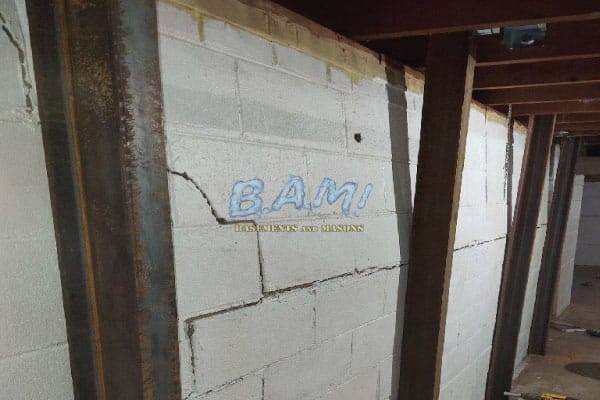An Unbiased View of Best Basement Waterproofing
An Unbiased View of Best Basement Waterproofing
Blog Article
The Ultimate Guide To Best Basement Waterproofing
Table of ContentsAll about Best Basement WaterproofingAn Unbiased View of Best Basement WaterproofingBest Basement Waterproofing for Beginners10 Simple Techniques For Best Basement Waterproofing7 Easy Facts About Best Basement Waterproofing Explained
uses excavation techniques toward the base of the structure's foundation. includes getting rid of moisture after it has entered the basement. AdvantaClean's qualified experts and technicians will situate the water resource. If wall surface or piece splits exist, we will certainly infuse polyurethane and epoxies right into the splits and secure the concession, stopping additional moisture from entering.Correct rating around the home to route wetness away from the structure. Putting up, repairing, or cleansing gutters and downspouts. Inside or external waterproofing with filler, sealer, and/or waterproof paint. Mounting basement air flow systems, conditioning systems, or basement dehumidifier systems to get water out of your cellar. Selecting AdvantaClean's basement waterproofing solutions is an efficient way to deal with moisture and protect against mold and mildew from endangering the structure of your home and the health of your household.
If there's condensation on the outside of the aluminum foil, you have high moisture in your basement. If the aluminum foil has condensation on the inside surface (following to the wall), the dirt around your residence might be naturally damp from a high water table or inadequate soil drain.
You can waterproof just your interior walls, which may solve the problem. Or you can waterproof your exterior walls, which is a better wager but more pricey. Right here's the inside story on the different kinds: These thick layers are cement-like. Once they dry out, they stick completely to concrete and stonework walls.
The Facts About Best Basement Waterproofing Uncovered
Concrete water-proof coatings can not be used to previously painted surface areas; examine the label. Recognized as densifiers, they are ideal just for wall surfaces that haven't been repainted or secured.
You clean, roll, or spray it on a lot more thickly one gallon covers simply 75 square feet, not the 300 square feet typical with standard paint. Water-proof paint is great for do it yourself application. You can apply it over painted surfaces, and paint over it once it's cured (one gallon costs $37).
It can cost $10,000 to $15,000, depending on the job required (Best Basement Waterproofing). Outside waterproofing involves excavating all around the home to the full visit site depth of the foundation wall surfaces, then setting up a waterproof layer or membrane layer covered by drainage panels.
Best Basement Waterproofing Fundamentals Explained
A basement without waterproofing is kind of like that. Your basement doesn't desire to go via a rainstorm without appropriate security simply as much as you do not want to.

Outside waterproofing is a waterproofing technique that includes securing your home from the exterior. The foundation walls are then cleaned up, sealed, and covered with a water-proof membrane or sealer.
Unknown Facts About Best Basement Waterproofing
It's a much more involved procedure that requires excavating up your lawn, which is expensive and lengthy. Exterior waterproofing involves removing every little thing bordering your house, consisting of decks, driveways, sidewalks, landscape design, a/c devices, decks, and so forth. If any one of the work was done inaccurately and water is still entering your basement, there isn't much you can do to correct or fix it.
Interior cellar waterproofing involves waterproofing from the inside. Any type of water that leakages into your basement is rerouted prior to it touches your floor. published here It's sort of like putting on a raincoat under your clothes. It entails two things: a water drain track and a sump pump. It works by securing the within of your cellar wall surfaces and floors so water that attempts to enter is directed out with a sump pump.
It's an efficient approach to water-proof your basement. The disadvantage of indoor cellar waterproofing mostly has to do with the installment process.
Best Basement Waterproofing Can Be Fun For Everyone
In conclusion, exterior and interior cellar waterproofing are both reliable approaches of shielding your home from water damages. Outside waterproofing develops a barrier that protects against water from entering your home, while indoor waterproofing redirects water that does enter your home. And it is essential to note that outside waterproofing is a pricey and disruptive installation process when compared to indoor waterproofing.
Whichever approach you choose, make sure you pick a trustworthy and credible professional for the task. If you have any type of questions regarding basement waterproofing, please reach out to us.
You can complete our form right here. Best Basement Waterproofing, begin a chat in the bottom right-hand corner, or call us at 1-800-827-0702
Report this page